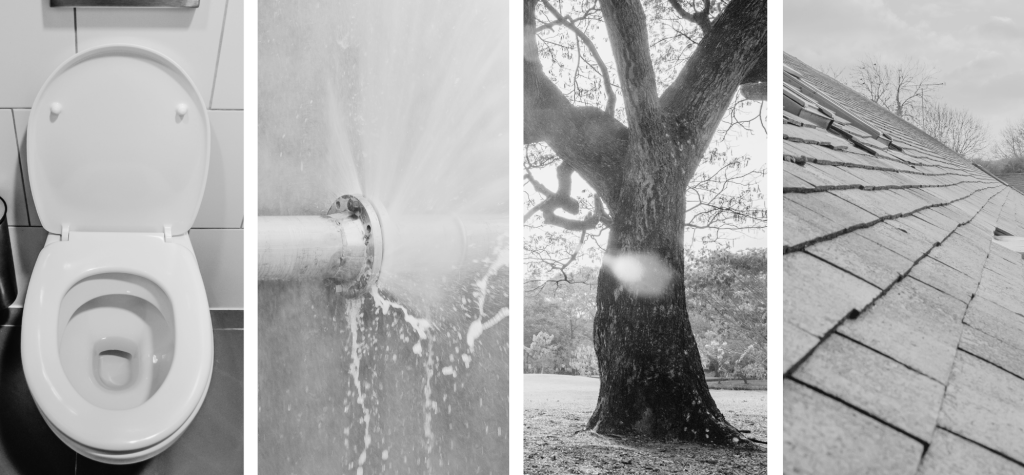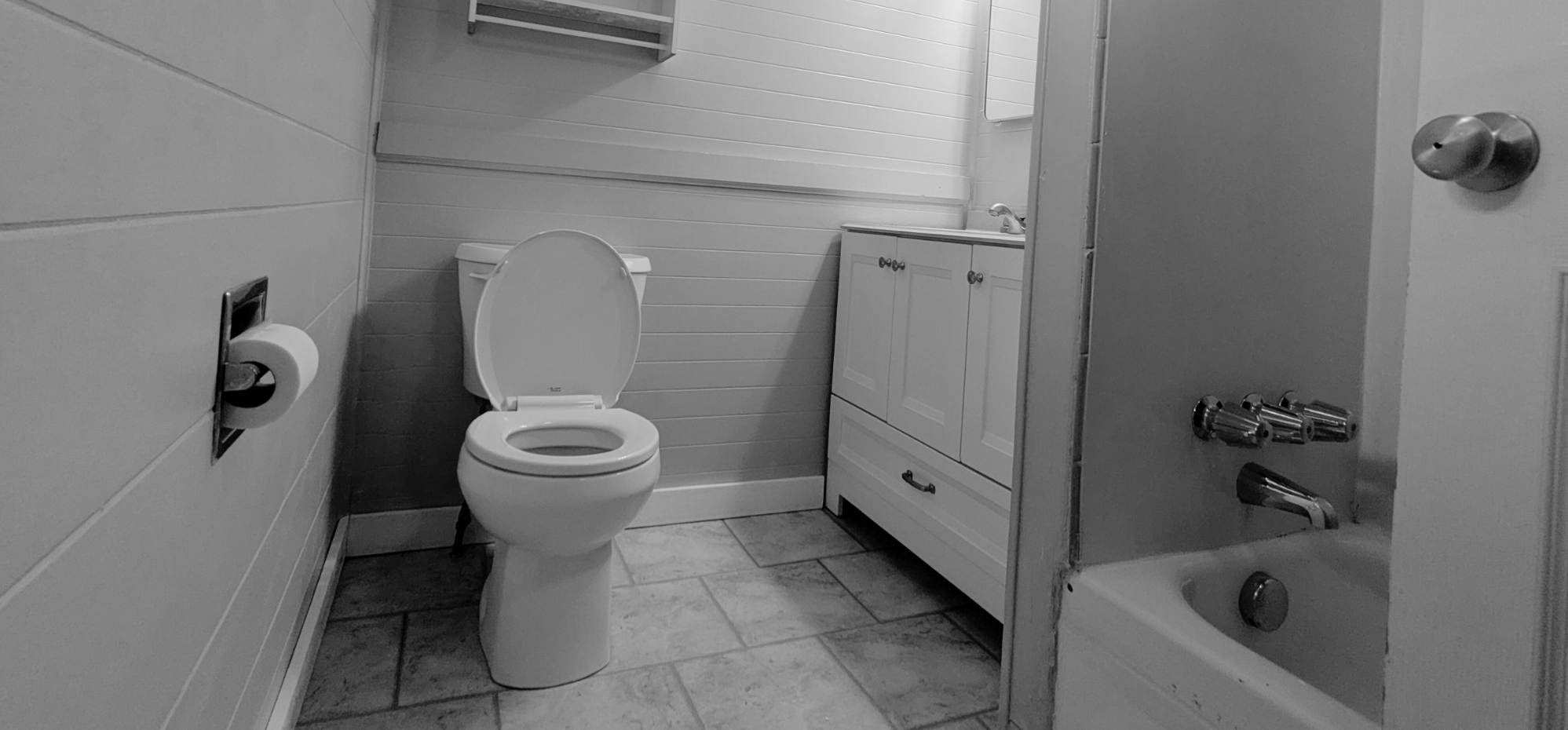
The Sewage Line Break
It’s the system no one wants to think about, but an old home in southwest Pennsylvania may mean an old drain system made of cast iron and terracotta piping. These materials are vulnerable to corrosion, damage from tree roots, and collapse.
A failed sewage system will cause immediate and complete loss of toilets, showers, and sinks. It will also cause a frantic phone call from your tenant.
Understanding how the sewage system in your rental property works and knowing the symptoms of a sewage system problem will help you locate the issue and complete repairs quickly and efficiently.
Always consult a certified plumber to assess and understand your rental property’s sewage system. Old homes may have gray water drains, multiple stacks, or other unique plumbing setups.
The Basic Sewage System
The Stack
The vertical pipe that carries wastewater to the ground level. Many stacks in old Pennsylvania homes are cast iron pipe.
The Sewage Line
The sewage line is typically buried underground and guides the wastewater out of the house and to the public sewage system.
The Public Sewer
The final destination for wastewater is the public sewer or, in more rural areas, the property’s septic system.
The Slope
Most home sewage systems use gravity to drain wastewater. The pipes must be sloped downward for wastewater to “fall” into the sewer.
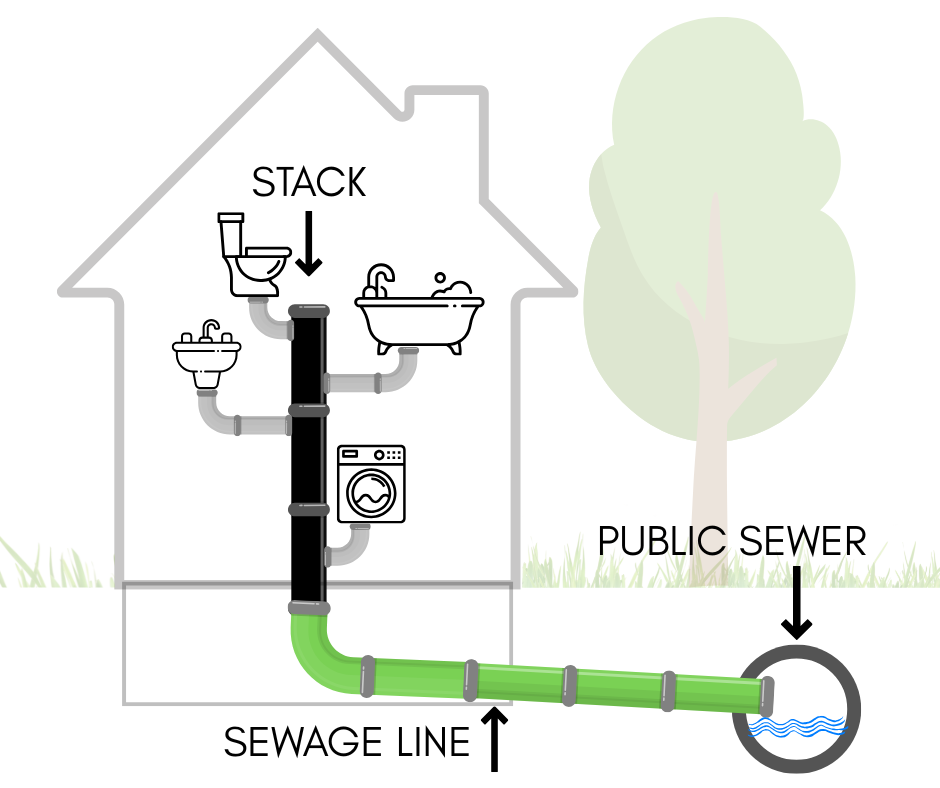
The Symptoms of a Problem
There are 3 common points of failure in a home sewage system: the interior (basement) failure, the exterior (yard) failure, and the stack leak:
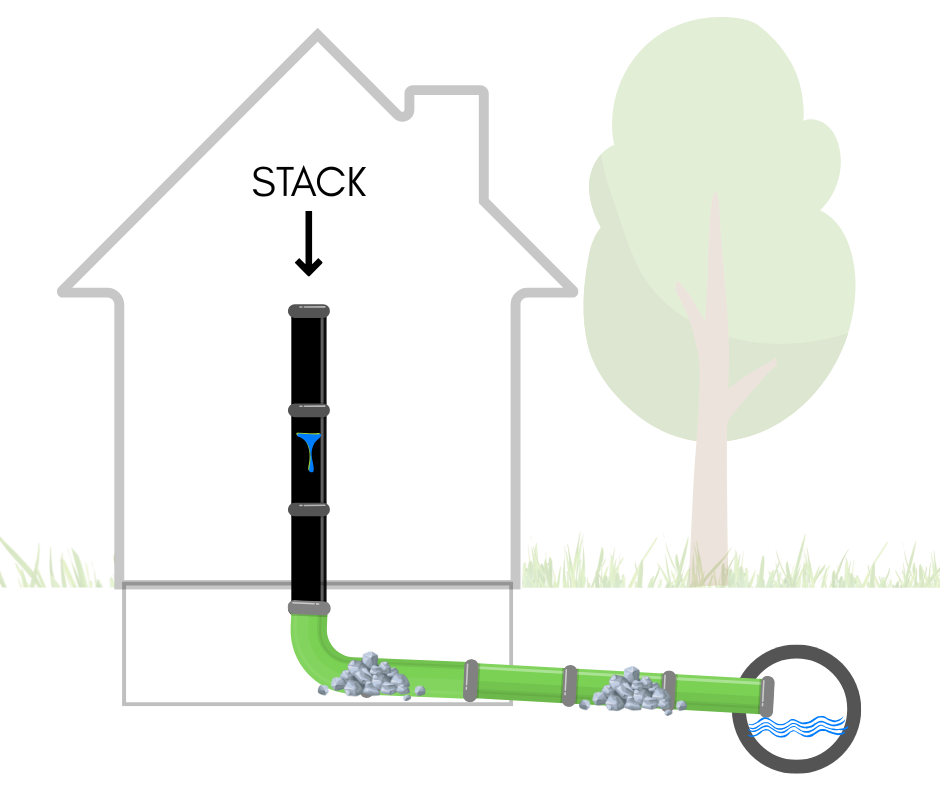
Interior Failure
There are different symptoms that could show up, but they will look like a pipe clog:
- Foul odor
- Slow draining bathtubs and sinks
- Water pooling in basement around floor drain
- Water backing up in bathtub and sinks
Exterior Failure
The symptoms of an exterior failure are similar to an interior:
- Foul odor
- Slow draining bathtubs and sinks
- Water pooling in basement around floor drain
- Water backing up in bathtub and sinks
- Wastewater pooling in the yard
Stack Leak
The symptoms for a stack leak can be more difficult to diagnose:
- Foul Odor
- Foul odor that comes and goes
- Damp walls and flooring around stack location
- Mold on walls around stack location
The Repair
Once a sewage system failure is confirmed, the cost of repair is every investor’s least favorite amount: “It depends.” The biggest variables are the location and the condition of the house.
For example, an interior failure or a stack leak that is causing mold will be much more expensive in a house with a finished basement.
For repairs inside, all damaged materials, such as drywall and carpet, will have to be removed. The space will need to be sanitized and – in worst case scenarios – undergo hazardous material or mold remediation. This repair may require up to 3 contractors: the plumber, the remediation company, and the remodeling contractor (to refinish once repairs are complete).
For a stack leak in old cast iron pipe, the whole stack will need to be replaced with more durable PVC pipe.
The interior failure may require a jackhammer to access the plumbing below a cement floor. An exterior leak might need a small excavator to dig up the final stretch of pipe that carries wastewater to the public sewer or septic tank.
Repairs can usually start at $5000. This will put plumbers on site with equipment to dig and replace a small, crushed section of pipe. As a better understanding of the problem is literally dug up, the cost can increase rapidly.
In a peaceful, old Penn Hills neighborhood, built on a hillside and surrounded by trees – with the public sewer buried behind the houses – the cost of rebuilding a fully collapsed sewer line can escalate to over $20,000.
Be Ready Before You Buy
The process of purchasing an investment property is not the same as buying your private home. The investor is responsible for deciding what home systems in a given property are vulnerable and understanding the future risk.
Understanding the condition of your property’s sewage system could save you tens of thousands of dollars. Some recommendations:
- Complete a dye test if not already required by the municipality
- Complete a full plumbing inspection
- Review the Seller’s Disclosure
- Ask questions regarding any plumbing work during the Seller’s ownership
Always consult a local real estate professional and a certified plumber who understand common plumbing and other maintenance issues in the area before purchasing an investment property.
Be Ready During Ownership
An old sewage system is not a reason to avoid an investment if you can buy the property for the right price. Some old systems are still in good condition and functional in old Pennsylvania houses today.
If you own an investment property with an old sewage system, there are a few things you can do to help protect your investment against an unexpected disaster:
- Understand your system including the materials and location of stacks, drain lines, and the public sewage or septic systems.
- Include requirements in your rental lease for proper use of the drain system. This should include no flushing of feminine products, “flushable” wipes, grease, diapers, or unclogging chemicals (such as Drain-o). These chemicals rarely fix the problem long term, and their corrosive properties can eat away at the pipes causing a bigger problem.
- Keep open communication with your tenant and ensure they know and report the possible symptoms of a bigger problem.
- Contact your insurance company about a sewage line policy. This is not included in standard property insurance policies but can usually be added for an additional fee and may offer several thousand dollars in coverage for a failure.
The worst part of a sewage line failure is not expecting it to happen.
When I was managing 300+ rental units in the greater east Pittsburgh region, it was common to have 1 or 2 sewage line repair projects in progress at any given time. This failure hit some property owners hard since it’s not covered by insurance and demands immediate action (and money).
Understanding your rental property’s system -and keeping open communication with your tenant – will help minimize the unexpected and keep your investment on track.
More resources...
Top 5 Worst Rental Maintenance Failures
These expensive maintenance failures are common for old homes in the SWPA region. Here's how to be prepared for them.
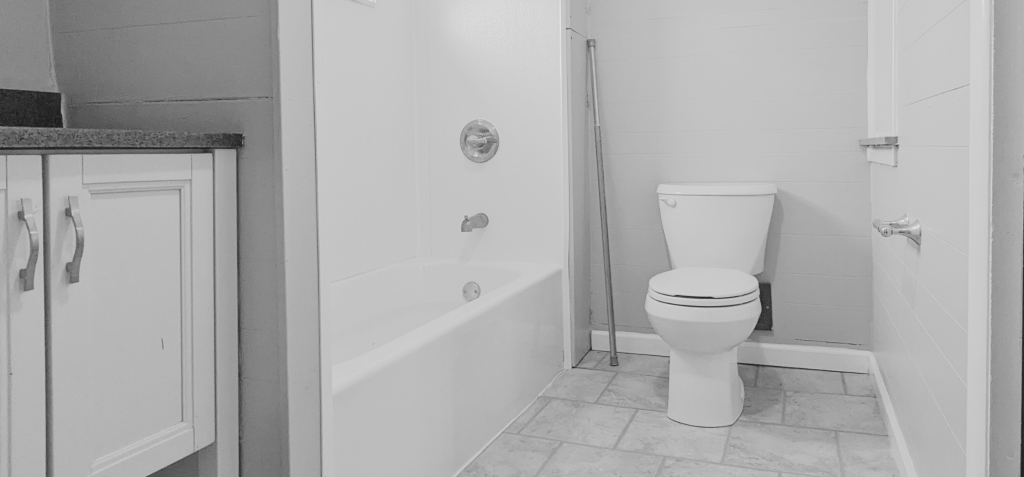
The Plumbing Back Up
Sewage is backing up in the bathtub of your rental property. If you're working with a plumber, here's what you can expect.

